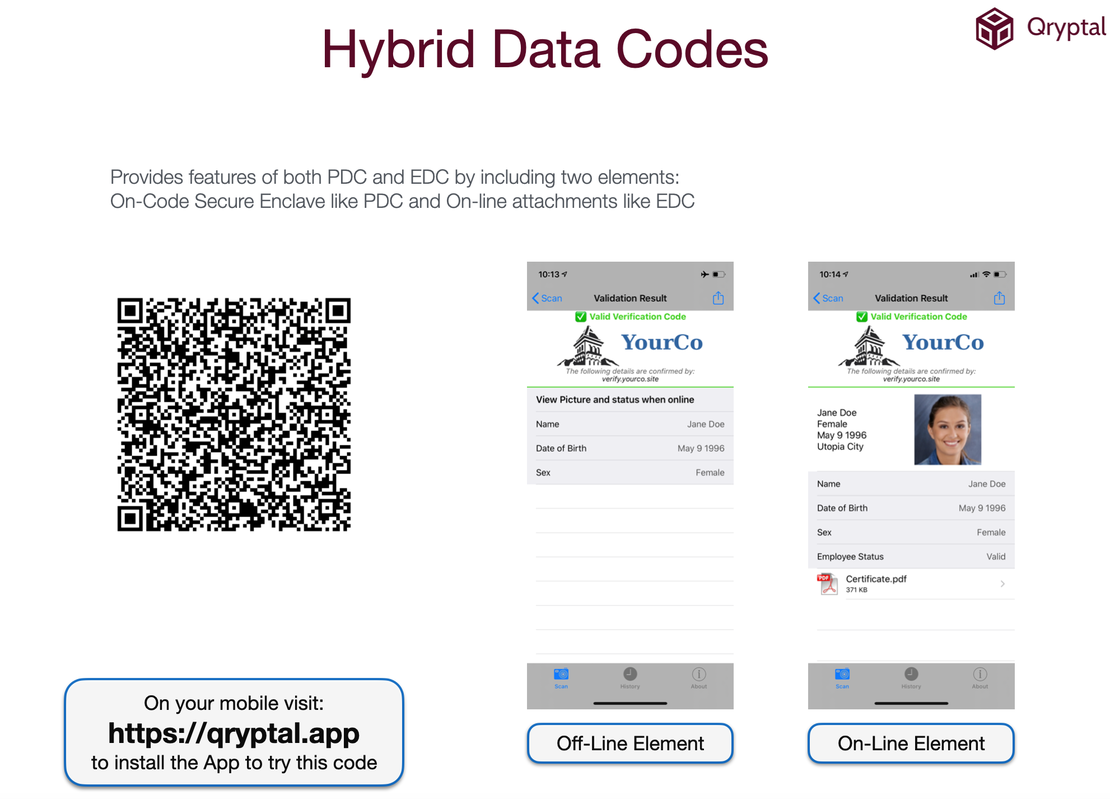Hybrids in QR Code – a reality with HDC
- Rajesh Soundararajan
- Jul 20, 2021
- 3 min read

It is no more PDC vs EDC; It is HDC = PDC+EDC !
In our last article, Solved: Ability to include Photographs in Secure PDC QR codes, we spoke about how the PDC vs EDC debate takes a new turn with the ability to include photographs. We also touched upon how PDC or Primary Data Code is a self-contained QR code with textual data and can be verified offline. We mentioned how EDC or Extended Data Code is used for images and files. Since these are larger, they are not stored inside the QR code but stored as encrypted blobs in storage (like AWS S3 or Azure Blob Storage) and fetched and decrypted using the key in the QR code. Hence there is a need for network/data connectivity to make EDC codes work.
There are factors to be considered for PDC vs EDC decision (offline verification, size and the need for revocation / updation). The fundamental difference we spoke about was that PDC did not need network/data connectivity for validation but also could not be revoked or updated. In contrast, EDC quotes can be revoked and updated but requires network/data connectivity for validation. Is there a way in which this choice is made easier or a non-issue? Yes - the answer is HDC.
At Qryptal, we are happy to share the newest innovation - HDC – a Hybrid Data Code (HDC) that combines the best of both worlds. HDC has two components
A PDC component that can be verified without network/data connectivity and
an EDC component can be verified when there is network/data connectivity (hence images and files) and can be revoked or updated as needed.
This is one level above PDC with a low-resolution photo. Of course, that was still a PDC code and came with its limitations, but this is a truly best of both worlds (PDC and EDC) experience.
A Classic Use Case for HDC - Driving License
A driving license is a very important document. It is usually used as an identity proof. But t can also provide more information to the traffic officials/authorities, such as an address, date of birth, expiry and even applicable demerit points, etc.
If the driving license were issued as an EDC, then the officials wouldn’t be able to check details where there is no network or data connectivity. However, suppose it was in the form of a PDC with a low-resolution photo. In that case, the details could be checked without data connectivity. But even here, any changeable element such as demerit points etc., would not be updated, or the validity of the license could only be extended by issuing it with a new QR code.
In this situation, when we use HDC, the offline details or the PDC component (for example, name, date of birth, address etc.) can be verified even when there is no network/data connectivity. On the other hand, when there is connectivity, the EDC components (photo, updated demerit points, etc.) can be validated and the revocation or updation can be checked.
As you can see, with HDC, our customers now have greater flexibility and control than ever before. They do not need to choose ‘between’ PDC and EDC quotes. They now can have both.
This is how it works. Use the Qryptal app available at the link mentioned (https://qryptal.app) and scan the code in the image below both without and then with network/data connectivity. You will see basic textual information being displayed when the network/data connectivity is absent and the full details (with photo and attached PDF) when there is data connectivity.

Hybrid Data Code (HDC)
Who said hybrids don’t rock !!
You may also be interested in -
- Solved: Ability to include Photographs in Secure PDC QR codes
- Why does Secure QR code score over Blockchain?
- Did you know - there is an easy way to incorporate document security with your LIS


